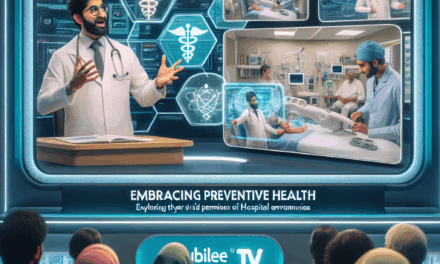Essential Smart Home Innovations for Senior Safety and Independence

As the global population ages, the demand for solutions that support senior safety and independence is growing. Smart home technology offers a promising avenue to address these needs, providing seniors with tools to maintain their autonomy while ensuring their safety. This article explores essential smart home innovations that are transforming the lives of seniors, enabling them to live independently for longer.
1. Smart Home Security Systems
Security is a primary concern for seniors living independently. Smart home security systems offer a range of features that enhance safety and provide peace of mind for both seniors and their families.
1.1 Advanced Surveillance Cameras
Modern surveillance cameras are equipped with high-definition video, night vision, and motion detection capabilities. These features allow seniors to monitor their surroundings and detect any unusual activity. Cameras can be accessed remotely via smartphones, enabling family members to check in on their loved ones from anywhere in the world.
For example, the Arlo Pro 4 Spotlight Camera offers 2K video resolution and a 160-degree field of view, providing comprehensive coverage of a senior’s property. Its built-in spotlight and siren can deter potential intruders, enhancing security.
1.2 Smart Doorbells
Smart doorbells, such as the Ring Video Doorbell, allow seniors to see and communicate with visitors without opening the door. These devices are equipped with cameras and two-way audio, providing an added layer of security. Notifications are sent to a smartphone when someone approaches the door, allowing seniors to decide whether to answer.
According to a study by Parks Associates, 25% of U.S. broadband households with a smart doorbell report feeling safer at home. This statistic highlights the impact of smart doorbells on senior safety.
1.3 Automated Locks
Automated locks eliminate the need for physical keys, which can be easily lost or forgotten. Seniors can lock and unlock doors using a smartphone app or a keypad. Some systems, like the August Smart Lock, offer features such as auto-lock and unlock, ensuring doors are always secure.
These locks can also be programmed to grant access to caregivers or family members, providing convenience and security. In case of an emergency, authorized individuals can enter the home without delay.
1.4 Motion Sensors
Motion sensors are a crucial component of smart home security systems. They detect movement within the home and can trigger alerts or activate other devices, such as lights or cameras. This feature is particularly useful for seniors who may be prone to falls or require assistance during the night.
For instance, the Philips Hue Motion Sensor can be integrated with smart lighting systems to automatically illuminate pathways when movement is detected, reducing the risk of falls.
1.5 Emergency Response Systems
Emergency response systems, such as Life Alert, have been enhanced with smart technology. These systems can be integrated with smart home devices to provide immediate assistance in case of an emergency. Seniors can activate the system using a wearable device or a voice command, ensuring help is always within reach.
According to the National Council on Aging, one in four Americans aged 65+ falls each year. Smart emergency response systems can significantly reduce the time it takes to receive help, potentially saving lives.
2. Health Monitoring and Management
Health monitoring is a critical aspect of senior care. Smart home innovations offer tools that enable seniors to manage their health effectively, providing real-time data and insights.
2.1 Wearable Health Devices
Wearable health devices, such as smartwatches and fitness trackers, monitor vital signs and physical activity. These devices can track heart rate, sleep patterns, and steps, providing valuable data for seniors and their healthcare providers.
The Apple Watch, for example, includes features like fall detection and an ECG app, which can alert emergency services if a fall is detected or if irregular heart rhythms are identified.
2.2 Smart Medication Dispensers
Medication management is a common challenge for seniors. Smart medication dispensers, like the MedMinder, provide reminders and dispense the correct dosage at the right time. These devices can also send alerts to caregivers if a dose is missed, ensuring adherence to medication schedules.
According to the World Health Organization, adherence to long-term therapy for chronic illnesses in developed countries averages 50%. Smart medication dispensers can improve adherence rates, enhancing health outcomes for seniors.
2.3 Remote Health Monitoring
Remote health monitoring systems allow healthcare providers to track a senior’s health from a distance. Devices such as blood pressure monitors, glucose meters, and weight scales can transmit data to healthcare professionals, enabling timely interventions.
For instance, the Withings Body Cardio scale measures weight, body composition, and heart rate, providing comprehensive health data that can be shared with healthcare providers.
2.4 Telehealth Services
Telehealth services have become increasingly popular, offering seniors access to healthcare professionals without leaving their homes. Video consultations and remote diagnostics enable seniors to receive medical advice and treatment, reducing the need for in-person visits.
A study by the American Journal of Managed Care found that telehealth services can reduce hospital readmissions by 25%, highlighting their potential to improve senior health outcomes.
2.5 Smart Air Quality Monitors
Air quality can significantly impact a senior’s health, particularly for those with respiratory conditions. Smart air quality monitors, like the Awair Element, track pollutants, humidity, and temperature, providing insights into indoor air quality.
These devices can be integrated with air purifiers or HVAC systems to automatically adjust settings and maintain optimal air quality, promoting a healthier living environment for seniors.
3. Smart Home Automation for Daily Living
Smart home automation simplifies daily tasks, enhancing convenience and independence for seniors. These technologies can be customized to meet individual needs, providing personalized support.
3.1 Voice-Activated Assistants
Voice-activated assistants, such as Amazon Alexa and Google Assistant, offer hands-free control of smart home devices. Seniors can use voice commands to adjust lighting, control thermostats, and play music, among other tasks.
These assistants can also provide reminders for appointments or medication, helping seniors manage their daily routines more effectively.
3.2 Smart Lighting Systems
Smart lighting systems, like Philips Hue, allow seniors to control lighting with a smartphone app or voice commands. These systems can be programmed to adjust lighting based on time of day or activity, enhancing comfort and safety.
For example, lights can be set to gradually brighten in the morning, simulating a natural sunrise and promoting a healthy sleep-wake cycle.




